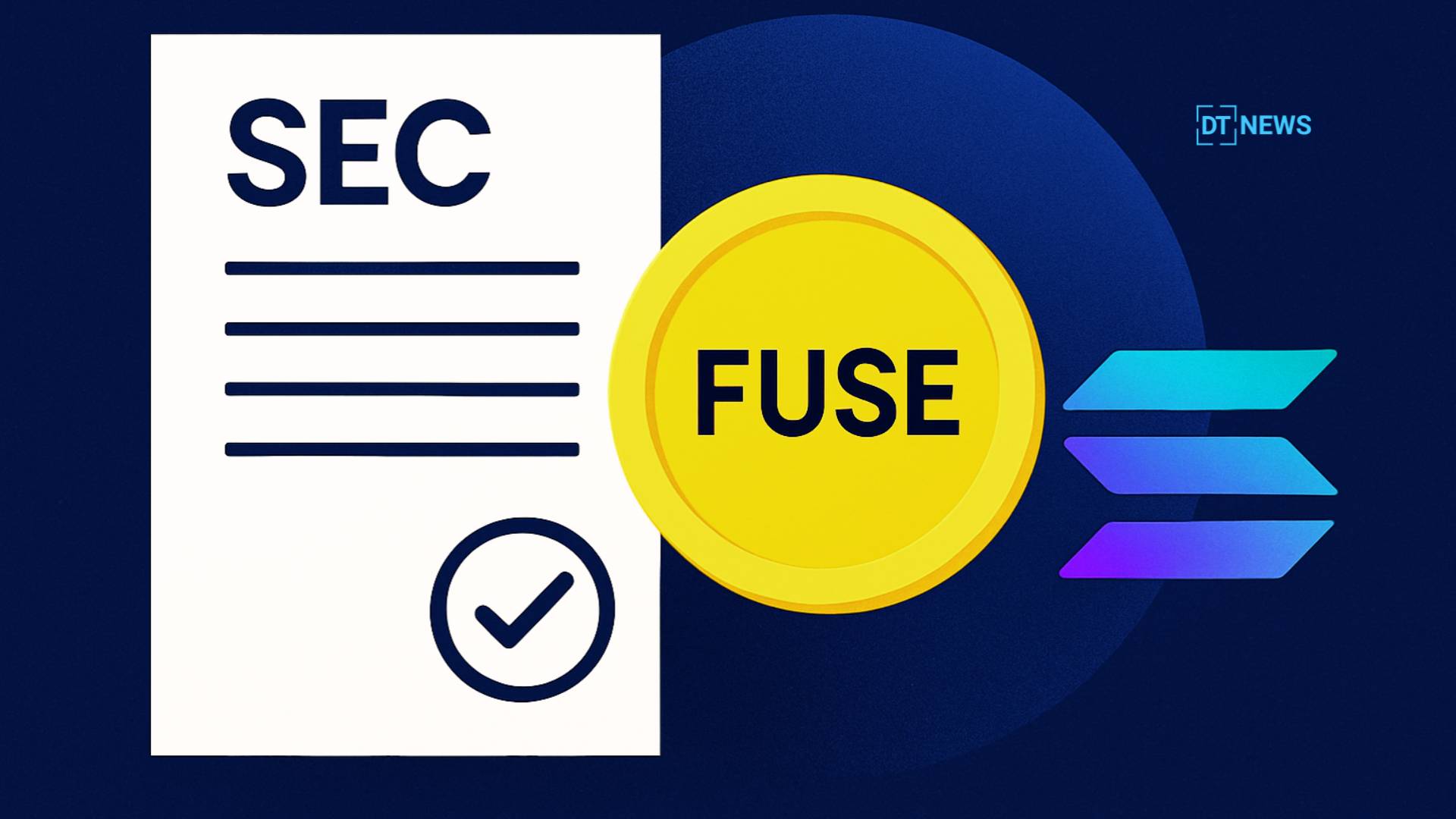The SEC no-action letter issued to Fuse has become one of the most important regulatory decisions for the DePIN sector this year. The decision that centers on the Solana-based Fuse Energy project gives Fuse a kind of regulatory breathing room that is not often seen for tokens meant to serve a practical purpose instead of acting like investment chips.
- What does the SEC no-action letter actually signify?
- Why did the SEC approve Fuse’s model?
- How does Fuse’s energy-driven model support its regulatory stance?
- Is the SEC adopting a more open stance toward DePIN projects?
- Why does Fuse’s clearance matter for the future of regulated crypto innovation?
- Conclusion
- Glossary
- Frequently Asked Questions About SEC No-Action Letter
People who follow the market say this move hints at a shift in how the Securities and Exchange Commission is starting to look at blockchain projects tied to real world infrastructure, a corner of the industry that has been waiting years for straightforward guidance.
What does the SEC no-action letter actually signify?
A SEC no-action letter is basically the regulator’s way of saying it will not push for enforcement as long as a project does exactly what it has laid out. These letters are fairly routine in older parts of finance, but they are still very rare in the crypto world.
Lawyers often describe them as a kind of regulatory protection because they give a project space to operate without worrying that the SEC will file a case against them right away.
In Fuse’s case, the request went in on November 19 and explained how the token works, how it is handed out, and why it is meant to be used rather than treated like an investment. After looking through the details, the SEC agreed that the project fits the standards for something that should not be treated as a security.
Why did the SEC approve Fuse’s model?
According to the letter, the SEC’s staff decided that FUSE tokens can be offered and sold under the conditions Fuse laid out without triggering any enforcement steps. Deputy chief counsel Jonathan Ingram noted that, based on the information provided, the staff would not recommend action as long as Fuse keeps distributing the tokens the same way.

The SEC also pointed out that the token can only be exchanged at an average market price through outside parties, which supports the idea that it is meant to be used, not treated like an investment.
Fuse said its token is meant to reward people who help the decentralized energy network by keeping equipment running, lowering their electricity use during busy times, or producing clean energy. This setup gives value to the actions of users rather than the work of a company’s managers.
Legal experts say this made the SEC no-action letter straightforward, because anyone familiar with the Howey test would see that the token does not meet the standards of a security.
How does Fuse’s energy-driven model support its regulatory stance?
Fuse’s system brings together clean-energy incentives and blockchain verification. People get FUSE for helping the energy system. They can earn FUSE by using solar panels, charging their car at good times, saving power when it’s busy, or making small home changes that reduce energy use.
The SEC said the token’s value comes from what people actually do, not from betting on price or expecting profit. Fuse also made clear that FUSE doesn’t give dividends, ownership, voting rights, or anything like that. Its main use is practical, like lowering energy costs, getting access to upgrades, or balancing out someone’s carbon footprint.
People can trade the token elsewhere if they want, but its real purpose stays within the Fuse system. One analyst noted that Fuse’s setup brings blockchain into everyday use instead of keeping it in the speculative corners of the market. They said the system’s rewards help keep consumers, grid operators, and energy-tech developers working toward the same goals.
Is the SEC adopting a more open stance toward DePIN projects?
Recent moves by the SEC point in this direction. The SEC no-action letter given to Fuse comes after a similar one issued to DoubleZero earlier this year, which is also a decentralized physical-infrastructure project. Having two approvals in a row has led many to believe the Commission is taking a fresh look at how utility-based digital assets should be treated under current rules.
This change seems to have started after the SEC’s leadership shifted in April, when Paul Atkins became the 34th chairman and Hester Peirce took on more responsibility in crypto oversight. People building in the DePIN space say the atmosphere is noticeably different. One co-founder said that meetings with the new leadership feel professional, balanced, and far less tense than before.
The Fuse decision seems to follow this new trend. Tokens that are built for real-world use may now be getting evaluated based on how they actually work, instead of being treated the same as speculative projects.
Why does Fuse’s clearance matter for the future of regulated crypto innovation?
The SEC no-action letter for Fuse is being seen as an important moment for DePIN projects that want clearer rules. It shows that tokens based on real, measurable user actions don’t have to be treated as securities.

It also suggests that utility tokens built with clear, transparent systems can fit within federal rules. Most importantly, it gives blockchain projects a model for rewarding participation instead of financial profit.
Solana-ecosystem attorney Rebecca Rettig said teams seek these letters for regulatory clarity and consider them important for projects that plan to distribute tokens over many years. As DePIN projects grow into a multi-billion-dollar sector, this kind of clarity is becoming crucial for steady and responsible development.
Developers are also encouraged by the SEC’s interest in creating a clearer token classification system that could eventually separate securities, utility tokens, and other digital assets. For now, the result in the Fuse case is seen as a move toward more predictable and steady guidance from regulators.
Conclusion
The SEC no-action letter given to Fuse shows that U.S. regulators are willing to tell the difference between speculative tokens and tokens built for real use. It also shows that well-designed projects, especially those connecting blockchain with real infrastructure, can be recognized without being pushed into the securities category.
One industry observer said this is the type of clarity builders have been hoping for, the kind that gives real-world utility room to grow. If more projects take the same approach and work with regulators early, the industry could slowly move toward clearer and more open rules that support real innovation.
For now, the clearance given to Fuse is viewed as an important moment in how crypto technology and U.S. regulation are starting to find more common ground.
Glossary
No-Action Letter: SEC notice confirming no enforcement if rules are followed.
Utility Token: A token meant for use inside a network, not for profit.
FUSE Token: Fuse Energy’s token that rewards users for saving or producing energy.
DePIN: A model where real-world systems are powered and maintained by users through blockchain.
Howey Test: A rule that checks if something counts as a security.
Utility Rewards: Tokens earned for real actions like reducing power use or supporting the network.
Frequently Asked Questions About SEC No-Action Letter
What is SEC no-action letter for Fuse?
The SEC no-action letter basically tells Fuse that SEC won’t take action as long as the project keeps doing things the way it explained to the regulator.
Why did the SEC give Fuse a no-action letter?
The SEC gave Fuse letter as token is mainly used inside network for utility, not really sold to the public as an investment.
Who signed the SEC response?
The response was signed by Jonathan Ingram, who is the deputy chief counsel in the SEC’s Corporation Finance division.
What does this decision mean for Fuse token?
It means token can be used in the network as a normal utility token and doesn’t need to be treated like a security anymore.
How does Fuse distribute its token?
Fuse gives token as rewards to people who help run energy network. It doesn’t really sell token in a public sale.
Sources



















































































































